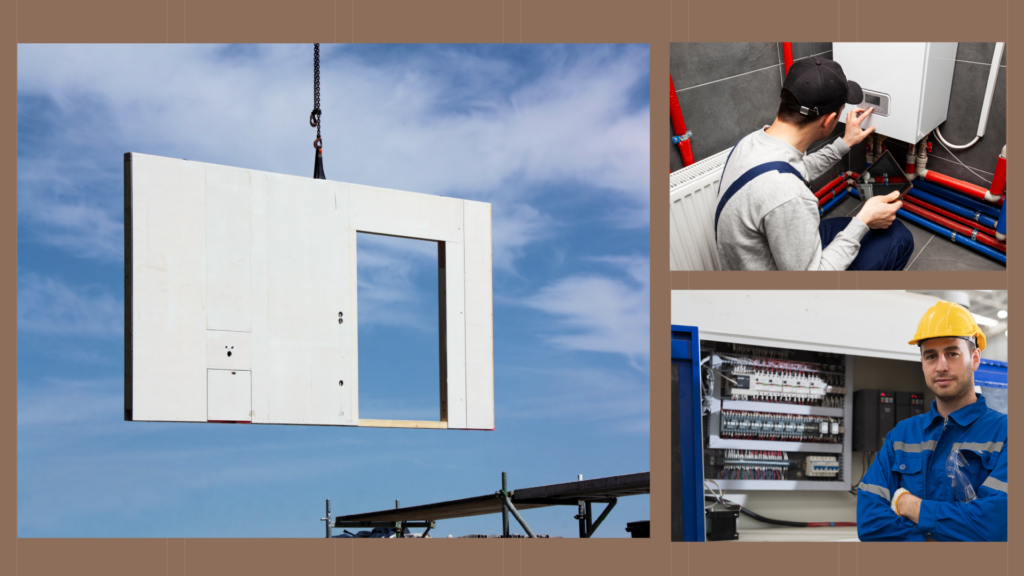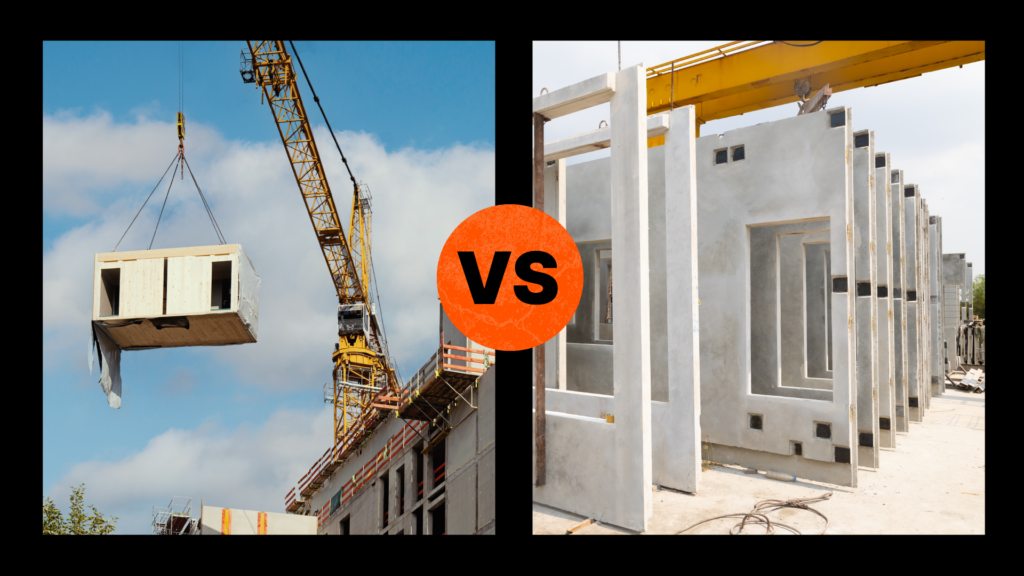— 10 min read
Connected Construction: Transforming the Industry Through Integration
Last Updated Apr 11, 2025
Last Updated Apr 11, 2025

Construction projects are becoming increasingly complex, so companies need to innovate to accurately and profitably complete these modern structures. Connected construction — using technology and data to improve communication, processes and outcomes — offers a comprehensive model for integrating digital tools to enhance collaboration and efficiency.
This article will discuss the components of connected construction, implementation strategies, benefits, challenges and the future trends shaping its evolution. Understanding how connected construction is transforming the industry can help companies position themselves for success in a competitive market.
Table of contents
What is connected construction?
Connected construction involves integrating digital technologies and data with current construction practices, which can fundamentally transform project scheduling and risk management. Connected platforms and tools allow stakeholders to collaborate seamlessly, with access to real-time data and more accurate and dynamic project scheduling. They can also improve risk management by providing predictive analytics and early warning systems that help identify potential issues before they escalate, reducing the likelihood of costly delays and rework.
For general contractors, connected construction means a more streamlined workflow with fewer disruptions. For project owners, it protects and optimizes their investments, and for project managers, it offers a centralized hub to oversee all project variables, leading to more successful project outcomes.
Components of Connected Construction
As the construction industry adopts digital transformation, several aspects of connected construction are revolutionizing project management, execution, and optimization. Here are the main elements that comprise the construction tech ecosystem.
Internet of Things (IoT)
IoT involves using sensors and devices to collect real-time data from construction sites, helping monitor equipment, environmental conditions and workflow efficiency.
Building Information Modeling (BIM)
BIM provides a digital representation of a project's physical and functional characteristics, facilitating visualization, coordination and simulation of construction processes.
Cloud Computing
Cloud computing offers centralized data storage and serves real-time data across different locations, giving all stakeholders access to up-to-date information and documentation.
Mobile Devices and Apps
These tools equip field teams with capabilities for on-site communication and instant updates, improving efficiency with quick access to project details and task management.
Artificial Intelligence (AI) & Machine Learning (ML)
AI and machine learning implement tools for predictive analytics and delay forecasting, allowing teams to anticipate potential issues and optimize decision-making by analyzing patterns and trends in project data.
Data Analytics
Data analytics involves processing and analyzing large datasets to derive actionable insights, supporting informed decision-making and strategic planning throughout the project lifecycle.
Collaboration Platforms
Construction management platforms provide software solutions for seamless stakeholder interaction, improved collaboration, document sharing and unified project management.
Notable Benefits of Connected Construction
Why does connected construction matter? In an evolving digitally connected world, adopting connected construction technologies is no longer optional for maintaining a competitive edge. The many benefits of integrating technology significantly enhance project outcomes and stakeholder satisfaction.
Heightened Collaboration and Real-Time Decision-Making
Connected construction fosters improved collaboration and communication among all project stakeholders, keeping everyone from contractors to project managers to owners aligned and informed.
Enhancing coordination synchronizes efforts and minimizes misunderstandings. With centralized data accessible in real-time, decision-making processes are greatly improved, allowing for swift and informed responses to emerging challenges and helping keep projects on schedule and within budget.
Increased Productivity and Safety
Adopting connected construction leads to increased productivity and streamlined workflows by automating routine tasks and simplifying complex processes. Improved accuracy and foresight prevent costly mistakes and adjustments, reducing rework to minimize cost overruns and delays.
These technologies also contribute to improved safety and increased project visibility, as real-time monitoring and data analysis help identify potential hazards and ensure compliance with safety standards.
Cost Savings and Competitive Advantage
Cost savings result from optimized resource management that minimizes waste and maximizes the use of materials and labor. For companies looking to maintain or gain a competitive advantage, the integration of these technologies can be a game-changer, as it leads to improved overall project performance and client satisfaction.
Courses about construction.
For construction.
Unlock your career potential with our free educational courses on Health & Safety, Data in Construction, and more.
How to Implement Connected Construction
Because of its diverse applications and purposes, implementing connected construction can benefit many construction companies' portfolios. These technologies can enhance project coordination, improve data management, streamline communication, increase safety measures and optimize resource allocation.
Project Types for Connected Construction
Large and complex projects call for connected construction’s increased visibility and management capabilities, yet companies that employ these technologies can see benefits on all project types and sizes.
Infrastructure and Large Public Projects
Highways, airports, bridges, water treatment plants and other public projects require project management to oversee complex contracts, multiple inspections and permits and diverse specialty contractors.
Complex Commercial Projects
Shopping malls, office complexes, universities and sports facilities benefit from technology’s ability to coordinate many stakeholders and track changes and approvals.
Healthcare Facilities
Integrating complicated but essential MEP and medical requirements when constructing or retrofitting hospitals requires the precision, communication and oversight capabilities of connected construction.
High-Rise Buildings
Vertical construction for skyscrapers and other tall buildings benefits from the planning, risk management and coordination of construction technologies.
Industrial Projects
Manufacturing facilities, power plants, refineries, warehouses and other industrial projects can capitalize on the resource tracking and safety oversight possible with connected construction.
Large Residential Complexes
Connected construction can enhance productivity and efficiency on more extensive residential developments, helping companies realize cost savings, even though the projects may be less complex than other types.
Retrofit and Renovation Projects
Seismic improvements, energy upgrades and other retrofitting projects often require coordinating complex changes to meet modern codes while retaining older structural elements. Renovations to large public or private properties similarly need coordination between subs and current occupants while managing targeted upgrades.
Getting Started with Connected Construction Equipment and Processes
Companies can follow these steps to integrate connected construction into operations.
Assess current capabilities.
Evaluate existing systems and processes to identify gaps and areas for improvement to determine which tools would best address these needs.
Set clear objectives.
Define specific connected construction goals, such as reducing project timelines, minimizing costs or improving safety protocols to guide implementation.
Select the appropriate equipment and software platforms.
Choose scalable, flexible technologies that align with company objectives and are compatible with the existing infrastructure.
Invest in training and support.
Provide comprehensive training and ongoing support to equip teams to apply new technologies to their work, maximizing connected construction benefits.
Create a collaborative culture.
Encourage stakeholder collaboration by promoting open communication and knowledge sharing. A collaborative culture supports the effective use of connected technologies and enhances overall project outcomes.
Incorporate data governance and cybersecurity.
Implement robust data governance policies to manage data quality and access. Prioritize cybersecurity measures to protect sensitive information from breaches and safeguard secure data exchange across platforms.
Comply with regulatory requirements.
Stay informed about industry-specific regulations to conform to best practices during implementation. Adhering to these measures avoids legal issues and boosts trust among stakeholders.
Continuously monitor and adjust.
Over time, continue to monitor the impact of connected construction on projects and the company as a whole, and be prepared to make adjustments as needed. Regular assessments will help refine processes and technologies to optimize performance and return on investment.
Case Study: Digital Transformation in Practice
As a midsize Alabama GC, Bailey Harris Construction implemented project management and quality and safety software to replace spreadsheets and individual email communications, improving tracking and efficiency to synchronize teams. “It was so cumbersome just trying to keep up and make everything match,” says Charles Carl, Senior Design Manager at Bailey-Harris.
The next step was adding BIM to coordinate teams’ access to updated design information.
“We all know how to read plans, but sometimes seeing the visual just makes all the difference in the world,” Carl said. The difference meant avoiding approximately 300 issues and saving an average of $124,500 per project.
The stellar results in team communication and project outcomes helped shift the culture within the company to embrace technology. Reducing errors and seeing real-time data to support decision-making helped every team, from finance and management to boots-on-the-ground and subs. Bailey Harris continues to strive for future improvements in using technology to connect the dots and improve efficiency on company projects.
“As a smaller GC, where everybody is wearing so many different hats," said Carl. "You need to be as efficient and effective as you possibly can.”
Key Challenges of Adopting Connected Construction
While the benefits of connected construction are substantial, the path to implementing these changes poses challenges that organizations must navigate to integrate these technologies successfully.
High Initial Investment and Cost Challenges
Implementing connected construction technologies often requires significant upfront investment in new tools, infrastructure and training. This financial burden can deter companies, particularly small- to medium-sized enterprises.
Resistance to Change within Organizations
Many organizations face internal resistance, as employees may hesitate to adopt new technologies and workflows. Reluctance to change can stem from a lack of understanding, fear of job displacement or comfort with existing processes.
Integration and Interoperability Issues Between Systems
Coordinating different technologies and platforms to work seamlessly together can require technical savvy. If not properly addressed, integration issues can lead to inefficiencies and may negate some of the advantages of connected construction.
Data Security and Privacy Concerns
With the increased use of digital tools, companies need to address the security and privacy of data. Construction projects often involve sensitive information, and any breaches can have significant repercussions. Data ownership can also be an issue on some projects.
Lack of Industry Standards and Potential Regulatory Hurdles
The absence of unified industry standards can create confusion and inconsistency in implementation. Navigating regulatory requirements can be complex, especially as laws and standards evolve.
Limited Digital Literacy and Skills Gap
Many construction workers may lack the digital literacy required to use advanced technologies effectively. Companies need to invest in training to close the skills gap and maximize the potential of connected construction.
Dependence on Reliable Internet Connectivity
Connected construction technologies rely heavily on strong internet connections. Not all worksites or geographic areas have the connectivity required for onsite access to data, which can limit the effectiveness.
Addressing these challenges requires strategy: careful planning, investment in training, collaboration with technology providers and ongoing evaluation for a smooth transition to connected construction.
Future Trends in Connected Construction
As technologies continue to evolve, several trends are shaping the unfolding of connected construction.
Increased Use of AI, IoT, Automation and Robotics
These technologies improve site safety by powering predictive maintenance and real-time monitoring of equipment and conditions. They also enhance operational efficiency by streamlining workflows, automating tasks, reducing human error and fostering greater collaboration through data sharing.
Advancements in BIM and Digital Twins
BIM and digital twin technologies are rapidly advancing to offer more robust tools for project visualization, monitoring and decision-making. A comprehensive digital representation of physical assets allows stakeholders to simulate different scenarios, optimize design and construction processes and make informed decisions based on real-time data.
Sustainable and Smart Construction Practices
The growing emphasis on sustainable construction practices is driven by the need to reduce environmental impact and comply with stricter regulations with eco-friendly materials and energy-efficient technologies becoming more common, saving costs, and improving performance.
Connectivity and 5G Implementation
The rollout of 5G networks is set to revolutionize connectivity on construction sites with faster data transfer, improved communication and more efficient use of connected devices. This advancement will help companies to implement more sophisticated technologies and improve overall site productivity.
3D Printing, Modular and Prefabricated Construction
A shift towards modular and prefabricated construction methods offers faster build times, reduced waste and higher quality control. 3D printing, on-site or off-site, can provide these benefits, plus the ability to fabricate complex designs. Connected construction technologies help optimize these processes through better planning, coordination, and execution.
The construction industry is moving toward more innovative, efficient and sustainable practices with connected construction equipment and technology, transforming how projects are conceived, executed and managed.
Technology and culture shifts are modernizing and connecting construction.
Both technological advancements and a cultural shift towards greater collaboration and innovation are propelling the construction industry. As connected construction technologies become increasingly integrated into project workflows, they are driving safety, efficiency and sustainability improvements.
Realizing the benefits of connected construction requires an organizational culture that embraces change and prioritizes continuous learning and adaptation. By nurturing a forward-thinking mindset and investing in technological tools and human capital, construction companies can position themselves to remain agile, competitive and capable of meeting future demands.
Was this article helpful?
Thank you for your submission.
0%
0%
You voted that this article was . Was this a mistake? If so, change your vote here.
Scroll less, learn more about construction.
Subscribe to The Blueprint, Procore’s construction newsletter, to get content from industry experts delivered straight to your inbox.
By clicking this button, you agree to our Privacy Notice and Terms of Service.
Categories:
Tags:
Written by
Julia Tell
43 articles
Julia Tell is a freelance writer covering education, construction, healthcare, and digital transformation. She holds a Ph.D. in Media & Communications and has written for publications including Business Insider, GoodRx, and EdSurge, as well as nonprofits, international businesses, and educational institutions.
View profileExplore more helpful resources

Modular Construction and MEP: A Collaborative Pairing
In an age of supply chain disruptions, workforce shortages, and rising material costs, off-site construction — including modular construction methods and prefabricated materials — is surfacing as a multipurpose solution....

Off-Site Construction: Prefab vs. Modular
As the construction world becomes ever more competitive, deadlines get tighter and the margin for error gets slimmer, project owners around the world are always looking for an edge. Thanks...

The Role of BIM in Sustainable Construction
Building information modeling (BIM) is transforming the architecture, engineering, and construction (AEC) industry. With this kind of sophisticated modeling, the industry has shifted from designing in 2D to 3D. This helps...

Harnessing Energy: Advancements in Offshore Wind Farm Construction
Offshore wind farms harness the potential of oceanic wind resources, providing a reliable and eco-friendly power source. As energy demand continues to escalate worldwide, these vast installations offer construction professionals...